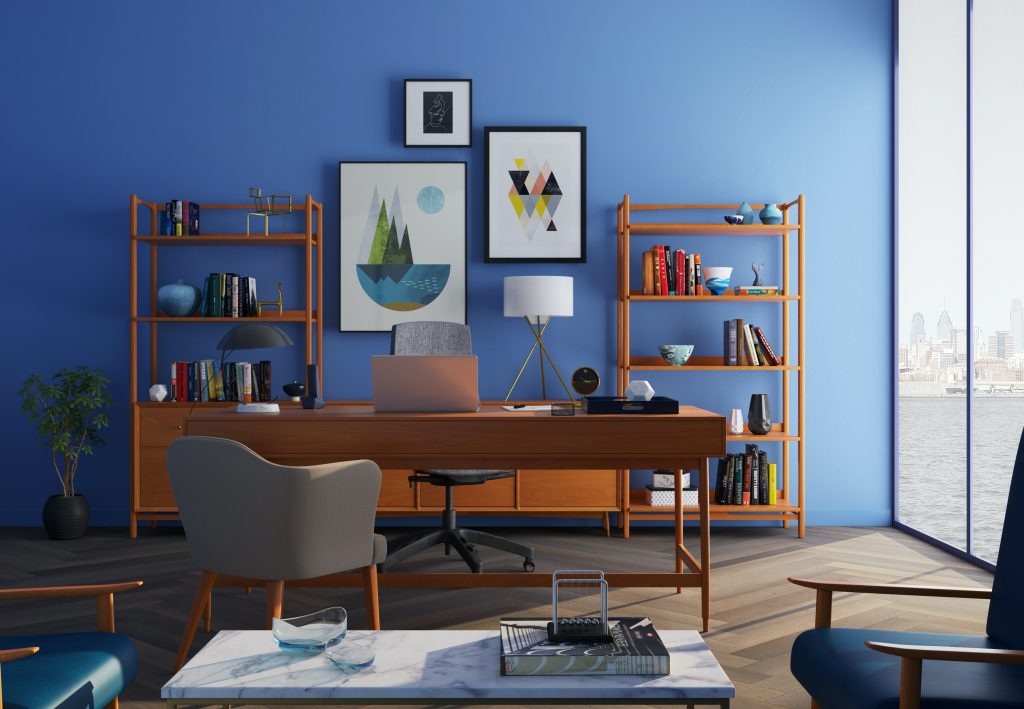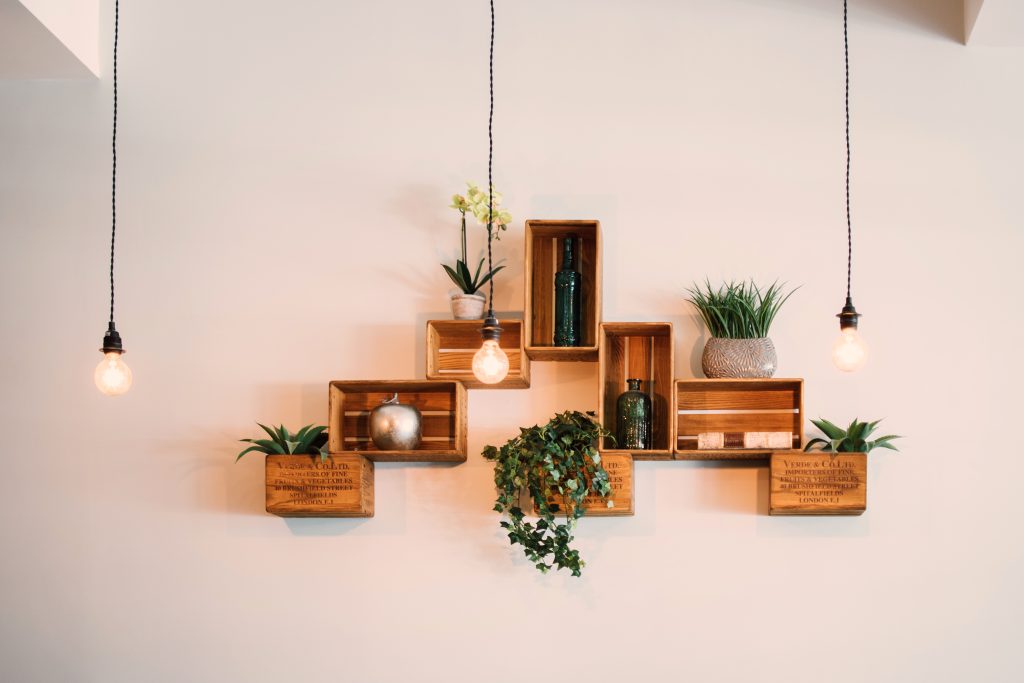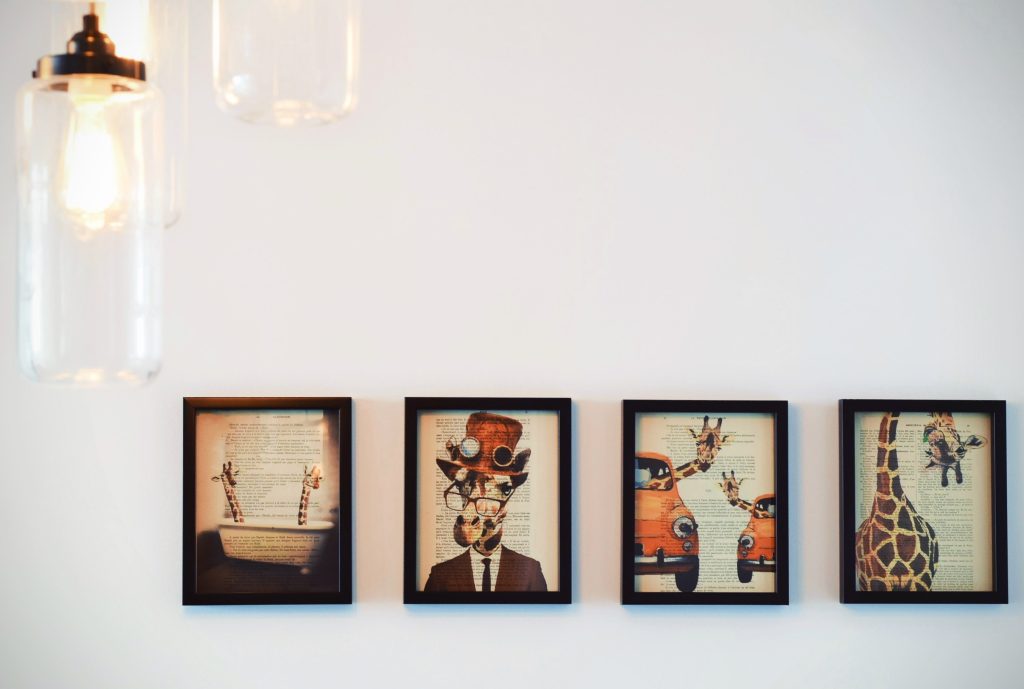Are you stumped on how to spruce up and display artwork in your home? You’re not alone! Finding creative, aesthetic ways to showcase pieces that inspire and reflect our individuality can sometimes be a challenge. Relying on ordinary frames for our prints is an easy option, but with a bit of clever thinking, we can take art displays to the next level – offering one-of-a-kind visual interest and individualized charm. So if you’re looking for some new ideas, read on: here are some unique inspiration points that will help make your artwork stand out.

Displaying Artwork on Shelves
Artwork is a wonderful way to add character and personality to any room. If you’re looking for a unique way to display your pieces, consider using shelves. This option allows you to showcase your artwork without having to nail anything to the wall. Not only is this practical, but it also adds a modern touch to your decor.
Shelves are versatile and can be used in any room, whether you want to display your paintings, sculptures or photographs. So don’t be afraid to get creative and experiment with different arrangements. With shelves, you can showcase your collection in a stylish and eye-catching way.

Making use of Mirrors
Mirrors can be a versatile way to display your artwork. Not only do they add a unique touch to your decor, but they also provide an opportunity to showcase your pieces in a creative way. You can choose to hang a mirror directly opposite a piece of art, allowing it to reflect and create an interesting visual effect.
Alternatively, you can position your artwork in front of the mirror against a contrasting background to draw attention to its details. Mirrors can be particularly effective in small spaces where they can create an illusion of depth and make the room feel larger. So, why not experiment with mirrors and see how they can help you enhance your artwork display?
Creating a Gallery Wall
If you’re looking to showcase your love for your furry best friends, creating a gallery wall filled with photos of your pets is the perfect way to do so. There’s no denying that our pets hold a special place in our hearts, and what better way to cherish their memories than turning your wall into a dedicated display of all their silly, cute, and memorable moments?

From playful puppy shots to lazy cat naps, you can mix and match various frames, sizes, and colours to create an eye-catching focal point in any room. Whether you’re a seasoned pro at home decor or just starting, a personalised pet gallery wall is sure to add character, warmth, and joy to your space.
Experimenting with Hanging Heights
Have you ever hung a picture on your wall and then second-guessed the height? Experimenting with hanging heights can make all the difference in displaying artwork. Depending on the size of the piece and the room, hanging it too high or too low can throw off the balance of the space. Try playing around with different heights until you find the sweet spot. You may be surprised how much of a difference it can make in the overall look and feel of the room. Don’t be afraid to get creative and try something new. Happy hanging!
Incorporating Sculptures
Sculptures are a wonderful way to showcase artwork and add depth and dimension to any space. Incorporating sculptures into your decor can capture the attention of visitors and breathe life into an otherwise plain room. Sculptures come in all shapes and sizes, from abstract pieces to intricate depictions of traditional subjects.
These unique works of art can be placed in common areas, entryways, or even outdoors to create a stunning visual statement. No matter your taste or style, there is a sculpture out there that will add an extra layer of beauty to your space.
Using Plants to Complement Artwork
Plants and artwork go together like peaches and cream. When used correctly, plants can complement the artwork and elevate any space from lacklustre to chic. Adding plants to your living space is not only aesthetically pleasing but has many scientifically proven benefits such as reducing stress and increasing productivity.
The combination of plants and art creates an inviting and warm atmosphere for you and your guests. By using the right plants, you can create a balance that works perfectly with your artwork. It’s safe to say that plants are an essential element that completes any art-filled space.
Lighting Artwork Correctly
Artwork deserves the perfect lighting to fully showcase its beauty and intricacies. The right kind of lighting can accentuate the colours, textures and details in a piece, while the wrong lighting can make it look flat, dull or distorted. In order to complement the artwork, lighting needs to be chosen carefully – taking into consideration the type of art, its size, the materials it’s made of and the space it’s displayed in.

Whether it’s warm or cool-toned, dim or bright, spot or ambient – the lighting should work in harmony with the artwork, enhancing its unique features and creating an immersive experience for the viewer. Give your art the attention it deserves, and let your space shine with the correct lighting.
Displaying Art with Unique Frames
Displaying art in your home is an excellent way to showcase your personal style and add character to any space. Choosing unique frames for your artwork can enhance the piece’s visual appeal and create a cohesive look in a room. Whether you opt for minimalist metal frames to highlight a piece’s simplicity or ornate wooden frames to add texture and warmth, there are countless options to complement any artwork’s style.
Don’t be afraid to experiment with different frame colours, shapes, and sizes to find the perfect fit for your space. With unique frames, you can transform a simple canvas into a stunning focal point that enhances the overall ambience of your home.
Getting Creative with Non-Traditional Displays
Art has always been about pushing boundaries and thinking outside the box. And what better way to do that than by getting creative with non-traditional artwork displays? From hanging sculptures from the ceiling to projecting images onto unexpected surfaces, the possibilities are endless. By taking art out of its usual frame or pedestal, we can breathe new life into it and challenge our perceptions of what art can be.
Whether it’s a collaborative installation in a public space or a personal experiment in your own home, non-traditional artwork displays are a chance to explore the boundaries of creativity and make a bold statement. So why not take a risk and try something new? The art world just might thank you for it.
Incorporating Textiles with Art
Art can take on many forms, using diverse materials and mediums to express creativity and ideas. One such material is textiles – a versatile and tactile material that can add texture, depth and dimension to any artwork.
By incorporating textiles with art, artists can create pieces that are not only visually captivating but also engaging to the touch. Intricate stitching, weaving, and embroidery can add a new layer of storytelling to a piece, infusing it with emotion and meaning that goes beyond what can be portrayed with paint or other materials. Textiles can be used in many ways, becoming the actual canvas for a painting, creating a unique mixed media artwork, or adding dimension to sculptures. Whatever the application, incorporating textiles with art brings a special warmth, texture and visual appeal to any piece.
Importance of Considering Room Colours
When it comes to displaying artwork, it’s important to consider many factors, including using colour schemes that are right for the room. The colours in a space can greatly impact how a piece of art is perceived and can either enhance or detract from its overall impact. For example, if you have a painting with vibrant colours, it may not stand out as well on a wall that is painted with a similar hue.

On the other hand, if you hang a piece of art on a wall that is painted with a contrasting colour, the artwork will pop and grab the viewer’s attention. So, before you hang that masterpiece, take a moment to consider the room’s colour scheme and how it can influence the art’s presentation.
Conclusion
One of the most important aspects of displaying artwork in your home is finding ways to make it stand out. Consider the colour and texture of the space, and arrange art accordingly. You can also layer artwork on shelves or give them unique frames – or no frame at all! Adding family photographs, souvenirs or objects related to your travels can all make your home feel like a living museum. The most important thing is to have fun with it.








